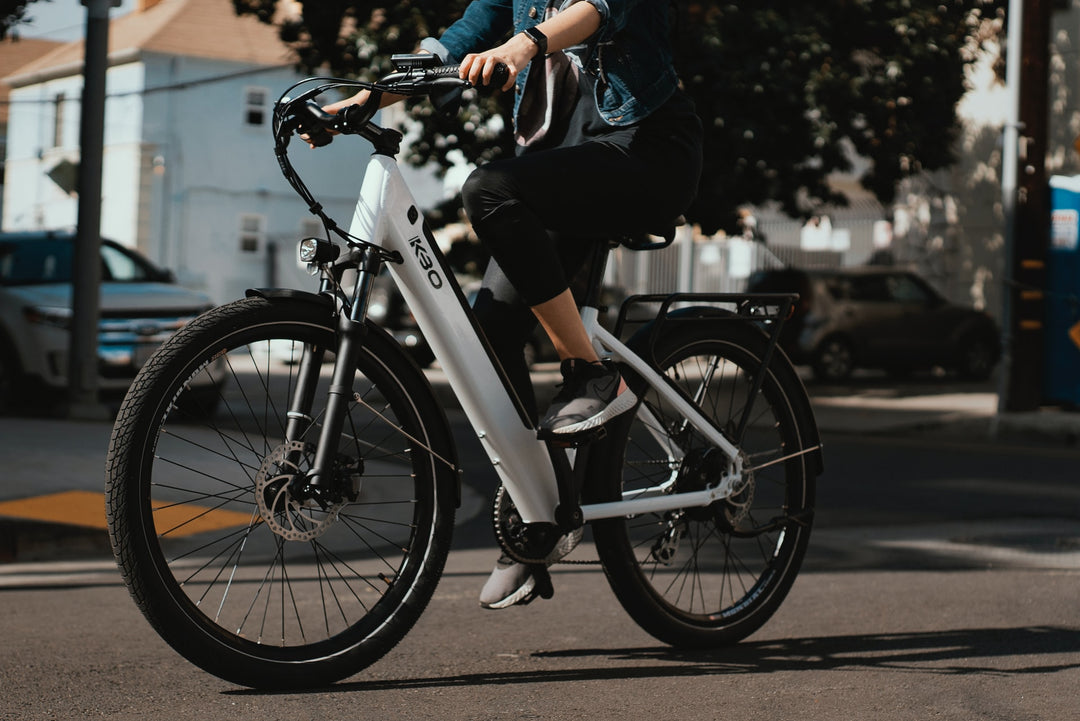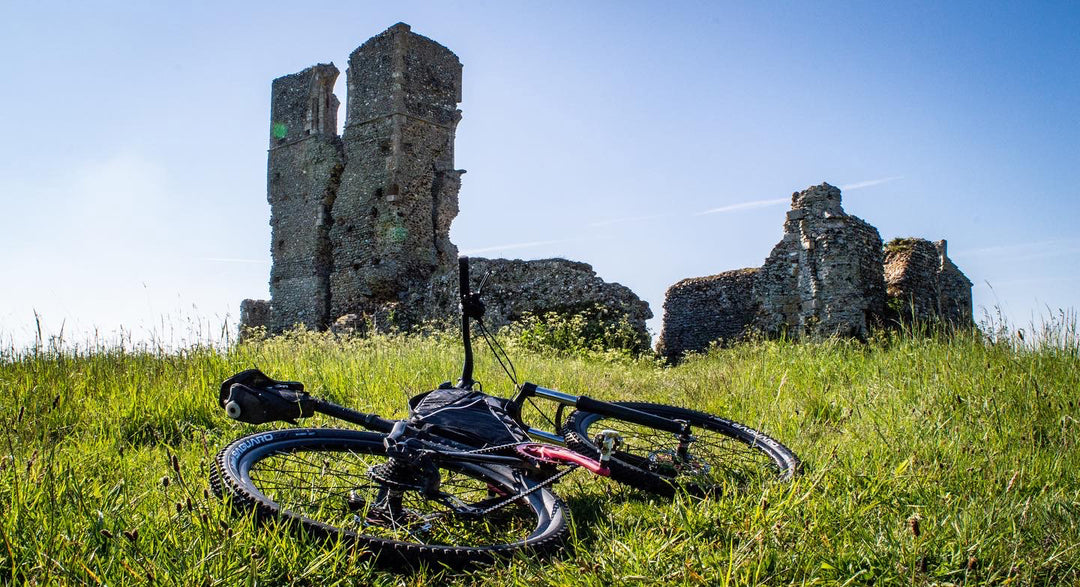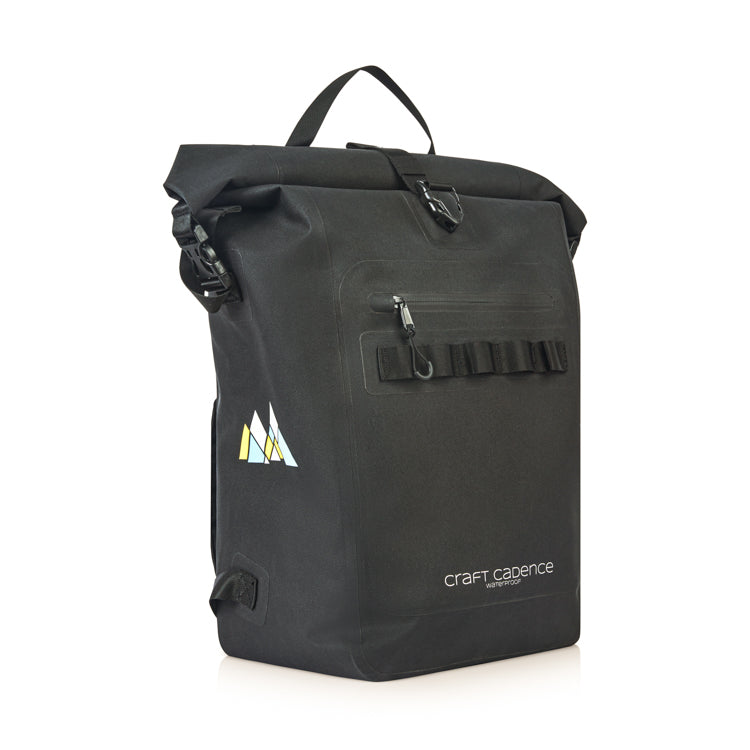Creating an eco-friendly waterproof cycling backpack series – rPET samples – EP005
In this series of blogposts, we share our journey with everyone one our road to creating the world's first 100% waterproof backpack made from recycled PET bottles.
Last episode, we went as far as finding a supplier who could finally supply us with the material that we needed for our new backpack. However, they couldn't provide us with samples to build the prototype that we need to test the product.
A few weeks on, we have made some more progress.
Our search turned to Taiwan, where we know has an abundance of manufacturing expertise for producing high quality products for the bicycles industry. It is the home of household names such as Giant and Merida, as well as OEM companies that make parts for the recognised brands that we know in Europe and North America.
Taiwan was also of interest because it has one of the highest PET return rates in the world at 80%, only bettered by Germany (95%), Japan (92%) and Scandinavian countries. This has led to a mature recycling industry that is able to turn plastic waste into useful everyday applications.
The combinations of these factors make Taiwan a unique opportunity for us, and through their official government department websites, they were able to connect us to a few companies that specialised in the rPET fabric manufacturing.
Two in particular stood out as not only were they familiar with rPET for backpack applications, but they also had the ability to make waterproof rPET fabric by applying a waterproof coating (e.g. TPU, PVC) on one side.
Despite this good news, we found a few more technical hurdles to overcome
Therefore we needed to find a rPET material combination that was not only waterproof but could be used in the seam welding process. We also need to increase the thread count of the rPET material as much as possible to ensure that it is as strong as virgin equivalents, and that it can withstand harsh elements that riders face in their daily commutes.
We requested samples from both suppliers, without having seen or touched any rPET materials at all.
Supplier A did not have any samples at hand for the specification we requested. To make the sample, it would cost USD250 as a surcharge, plus 15-20 yards of material for a sample run. That would be a downpayment of around USD400-500 just to see if the material could be used at all.
Supplier B, thankfully did have some samples and there were two variants. rPET coated with PVC, and rPET coated with TPU.
We were over the moon when they sent pictures of the fabric to us. Even though we could not touch the materials, it seemed our dream could actually become a reality. Here are the pictures below.
rPET with TPU

rPET with PVC

We went with supplier B and had the two sample variants sent to one of our manufacturing partners in China for testing. A week later, the results came back showing that rPET with PCV cannot be used in the seam welding process but that rPET with TPU could.
That was excellent news! We finally felt like we were going somewhere, and that we needed to focus on this combination of materials.
We enquired to supplier B to produce around 5 metres of rPET fabric to help us make our first prototypes of the bag.
Below was their response:

This means that to fulfil their MOQ (minimum order quantity), we would need to purchase 3000 yards, which is around 2,508 m2 of material, enough to make 2,500 backpacks at 1m2 per back (from experience). That is a very hefty minimum order for a start up companies like ours without an mature, established customer base. For companies like Deuter, Ortlieb, this amount would be a drop in the ocean but for us, this is massive and to be honest, we don't have that amount of spare funds in our reserves anyway.
Putting that aside for now, the next steps would be the USD200 machine surcharge and a sample run of 30 yards, enough to make 25 backpacks. Even that is a considerable sum for us, but something we are seriously considering.
25 backpacks would be enough to make prototypes as well as the first small run of the final version of the backpack which we can sent to media, influencers and made available to our insider's group at a discount. So overall, it would be money well spent if executed well.
What we do need now is to build a picture of the overall cost of the bag, to see if using rPET bags will be commercially feasible in the market. Now that we know the cost of the rPET fabric, we can start building in those costs and compare them with conventional materials. We don't know the answer yet, but we are curious to see where this journey will take us next.
Last episode, we went as far as finding a supplier who could finally supply us with the material that we needed for our new backpack. However, they couldn't provide us with samples to build the prototype that we need to test the product.
A few weeks on, we have made some more progress.
Our search turned to Taiwan, where we know has an abundance of manufacturing expertise for producing high quality products for the bicycles industry. It is the home of household names such as Giant and Merida, as well as OEM companies that make parts for the recognised brands that we know in Europe and North America.
Taiwan was also of interest because it has one of the highest PET return rates in the world at 80%, only bettered by Germany (95%), Japan (92%) and Scandinavian countries. This has led to a mature recycling industry that is able to turn plastic waste into useful everyday applications.
The combinations of these factors make Taiwan a unique opportunity for us, and through their official government department websites, they were able to connect us to a few companies that specialised in the rPET fabric manufacturing.
Two in particular stood out as not only were they familiar with rPET for backpack applications, but they also had the ability to make waterproof rPET fabric by applying a waterproof coating (e.g. TPU, PVC) on one side.
Despite this good news, we found a few more technical hurdles to overcome
- Some combinations of rPET fabric are not suitable for high frequency seam welding technology, due the heating process. If combined with the wrong materials, the rPET may melt into the other material. As mentioned in a previous blogspot, seam welding is a necessary process to ensure 100% waterproofing
- rPET is generally not as strong as PVC tarpaulin and nylon materials with high thread counts. The highest thread count available for rPET is 600D at 0.12mm thickness.
Therefore we needed to find a rPET material combination that was not only waterproof but could be used in the seam welding process. We also need to increase the thread count of the rPET material as much as possible to ensure that it is as strong as virgin equivalents, and that it can withstand harsh elements that riders face in their daily commutes.
Making samples
We requested samples from both suppliers, without having seen or touched any rPET materials at all.
Supplier A did not have any samples at hand for the specification we requested. To make the sample, it would cost USD250 as a surcharge, plus 15-20 yards of material for a sample run. That would be a downpayment of around USD400-500 just to see if the material could be used at all.
Supplier B, thankfully did have some samples and there were two variants. rPET coated with PVC, and rPET coated with TPU.
We were over the moon when they sent pictures of the fabric to us. Even though we could not touch the materials, it seemed our dream could actually become a reality. Here are the pictures below.
rPET with TPU

rPET with PVC

Testing with Seam Welding Machines
We went with supplier B and had the two sample variants sent to one of our manufacturing partners in China for testing. A week later, the results came back showing that rPET with PCV cannot be used in the seam welding process but that rPET with TPU could.
That was excellent news! We finally felt like we were going somewhere, and that we needed to focus on this combination of materials.
Cost of making our first prototypes
We enquired to supplier B to produce around 5 metres of rPET fabric to help us make our first prototypes of the bag.
Below was their response:

This means that to fulfil their MOQ (minimum order quantity), we would need to purchase 3000 yards, which is around 2,508 m2 of material, enough to make 2,500 backpacks at 1m2 per back (from experience). That is a very hefty minimum order for a start up companies like ours without an mature, established customer base. For companies like Deuter, Ortlieb, this amount would be a drop in the ocean but for us, this is massive and to be honest, we don't have that amount of spare funds in our reserves anyway.
Putting that aside for now, the next steps would be the USD200 machine surcharge and a sample run of 30 yards, enough to make 25 backpacks. Even that is a considerable sum for us, but something we are seriously considering.
25 backpacks would be enough to make prototypes as well as the first small run of the final version of the backpack which we can sent to media, influencers and made available to our insider's group at a discount. So overall, it would be money well spent if executed well.
Commercials
What we do need now is to build a picture of the overall cost of the bag, to see if using rPET bags will be commercially feasible in the market. Now that we know the cost of the rPET fabric, we can start building in those costs and compare them with conventional materials. We don't know the answer yet, but we are curious to see where this journey will take us next.



